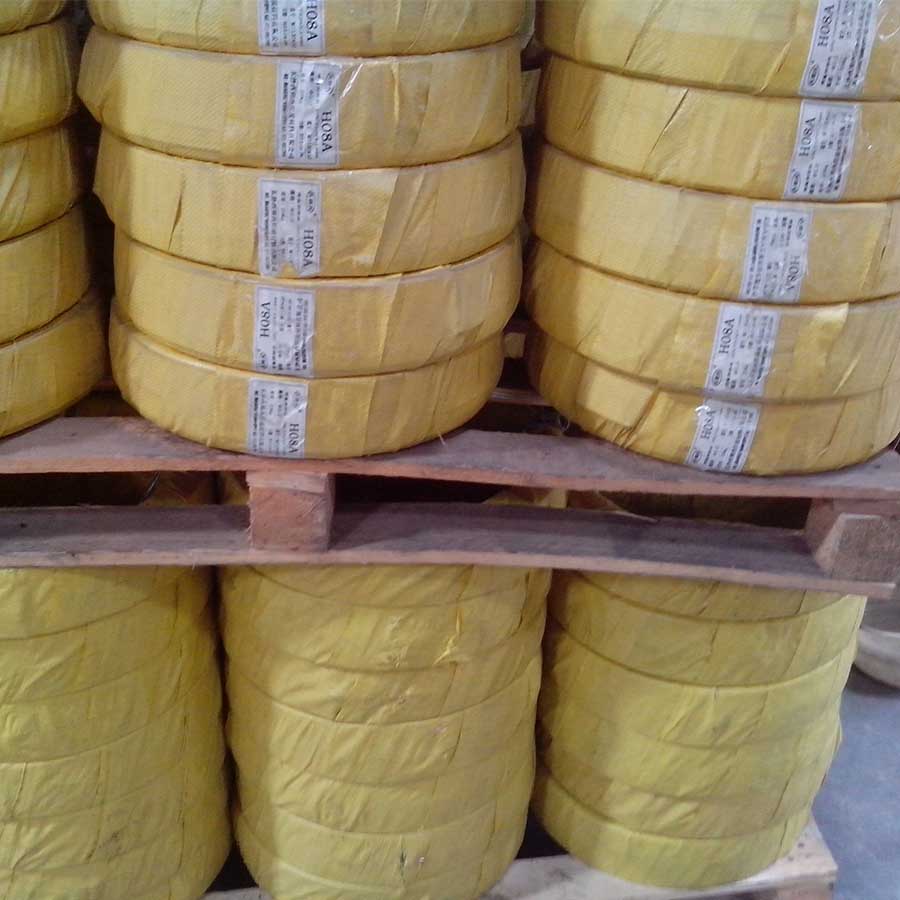wholesale welding electrode rod manufacturer
Exploring the World of Wholesale Welding Electrode Rod Manufacturing
The demand for welding electrode rods is consistently on the rise, driven by various industries such as construction, automotive, shipbuilding, and repair services. As a wholesale welding electrode rod manufacturer, understanding the intricacies of production, quality assurance, and market trends is paramount for success. In this article, we will delve into the manufacturing process, the various types of welding electrodes, and the importance of sourcing from reputable suppliers.
Understanding Welding Electrodes
Welding electrodes are essential components in the welding process, providing the necessary material to form a bond between two substrates. They are typically composed of a core wire and a coating that aids in the welding process by stabilizing the arc and protecting the molten weld pool from contamination. Different types of electrodes are used for various welding processes, including Shielded Metal Arc Welding (SMAW), Gas Metal Arc Welding (GMAW), and Flux-Cored Arc Welding (FCAW).
The primary types of welding electrodes include
1. E6010 Electrode Known for its deep penetration capability, it is often used in pipeline welding. 2. E6011 Electrode Similar to E6010, this electrode works well on rusty or dirty materials. 3. E7018 Electrode This low-hydrogen electrode is favored for its excellent mechanical properties and is often used in structural steel welding.
The Manufacturing Process
Manufacturing welding electrodes involves several key steps, each critical to producing high-quality products. The process begins with sourcing raw materials, including the core wire and coating ingredients. The quality of these materials significantly affects the final product's performance and reliability.
1. Preparation and Mixing The raw materials are carefully prepared and mixed to form the coating material. The mixture is often composed of fluxing agents, metallic powders, and mineral compounds.
2. Wire Drawing The core wire is drawn to the required diameter, which is crucial as it affects the electrode's performance during welding.
3. Coating The prepared mixture is then applied to the core wire, usually through an extrusion or dipping process. Uniform coating is essential to ensure an even burning rate during welding.
4. Drying and Baking Once coated, the electrodes are dried and baked to enhance their properties. This step removes moisture and strengthens the coating, ensuring better performance.
wholesale welding electrode rod manufacturer

5. Quality Control Rigorous testing and inspection follow the manufacturing process. Quality control checks, including tensile strength, weldability, and chemical composition analysis, ensure that the electrodes meet industry standards.
Choosing the Right Manufacturer
For businesses looking to purchase welding electrodes in bulk, selecting a reputable wholesale manufacturer is crucial. Quality assurance, consistency in production, and excellent customer service are essential factors to consider. A manufacturer should be able to provide certifications that guarantee their products meet international and domestic standards.
1. Certifications and Compliance Manufacturers should hold necessary certifications, such as ISO 9001, which demonstrate their commitment to quality management standards.
2. Product Range A good wholesale manufacturer will offer a diverse range of welding electrodes suited for various applications, allowing consumers to source everything they need from a single supplier.
3. Competitive Pricing While price should not be the only factor, ensuring competitive pricing without compromising on quality is essential for maximizing profits.
4. Customer Support Reliable customer support can help resolve issues quickly and ensure a smooth ordering process.
Market Trends
The welding industry is evolving, driven by technological advancements and changing consumer demands. Automation and robotics are increasingly being used in manufacturing processes, enhancing efficiency and precision. Additionally, the growing focus on sustainability is encouraging manufacturers to develop eco-friendly electrodes, appealing to environmentally-conscious consumers.
As industries continue to innovate and expand, the role of wholesale welding electrode rod manufacturers will evolve. Understanding market needs and staying updated with technological trends will be vital for those seeking to thrive in this competitive field.
Conclusion
The wholesale welding electrode rod manufacturing sector plays a critical role in supporting various industries. By understanding the manufacturing process, the types of electrodes, and the importance of choosing the right supplier, businesses can ensure they meet the needs of their customers while maintaining high standards of quality and efficiency. As the industry evolves, staying ahead of market trends and advancements will be crucial for long-term success.
-
Best MIG Welding No Gas Flux Core Solution – Easy, Portable & Clean WeldingNewsJul.08,2025
-
7018 Welding Rod 3/16 - High Strength, Low Hydrogen Electrodes Wholesale 3/32 Welding Rod 7018 Suppliers & China 7018 AC Welding Rod FactoryNewsJul.08,2025
-
High Quality MIG Aluminium Welding Wire - Wholesale Factory Prices from China SuppliersNewsJul.07,2025
-
High-Quality Gasless Aluminum Welding Wire China Gasless Aluminum MIG Wire SupplierNewsJul.07,2025
-
High Quality Ordinary Welding Rod for Pipes – Reliable China Welding Rod 7016 SupplierNewsJul.06,2025
-
Welding Wire 0.9 mm ER70S-6 Supplier Wholesale Manufacturers & FactoriesNewsJul.06,2025


